
Under the umbrella of speculative fiction—a genre that leaves realism behind for the fantastical, the supernatural, the futuristic, and more places reached by human imagination—exist the subgenres of fantasy, science fiction, superhero fiction, alternate history, post-apocalyptic future, utopia, and dystopia, to name a few. Here, we will delve into dystopian fiction and discuss the subgenre's history and common themes found between the pages of books and on the screen.
The book considered the first modern dystopian novel, before Fahrenheit 451 and The Hunger Games, is We by Yevgeny Zamyatin, published in 1922. With We, the dystopian genre became more defined. Zamyatin pulled from his experiences in Russia to create a fictional totalitarian society of the OneState led by an all-powerful "Benefactor." His work inspired George Orwell's 1984 and Aldous Huxley's Brave New World—two works that hold out as classic examples of dystopian fiction today.
Dystopian fiction is often characterized by fear, oppression, or cataclysmic events or conditions that cause a decline in society and/or the quality of life of the characters living within the setting. Common themes within dystopian stories include:
- Politics — Oftentimes depicted with a tyrannical governing or ruling class and the surveillance and oppression of the people. The use of propaganda and misinformation to affect the flow of information and the mindset of people.
- Economy — Examples include a state-controlled economy, lack of meaningful work, economic inequality, black markets, privatization, and corporatism.
- Class — Stark differences in class privilege and quality of life, strict caste systems, working class exploitation, police brutality, and lack of healthcare or education.
- Family — Family structures are broken up, controlled, or artificial.
- Religion — Religious group is either the oppressed (by a larger group or government) or the oppressor (religious text and themes used to oppress those under a theocratic regime).
- Identity — Individuality is suppressed, conformity is demanded under threat of social ostracizing or violence, and/or people are numbers and not names. Specific groups are dehumanized.
- Violence — War, blood sport, normalized violence, and rampant crime.
- Nature — Characters are isolated from nature, nature has become dangerous either due to human influence or natural disaster, or alien nature is hazardous. It could also be the spread of a natural disease.
- Technology — Science and technology encourage or are a scapegoat for the worst human actions, suppress or harm communication, destroy nature, solve one problem only to create other worse problems, or take over human jobs or the world. Alternatively, a sudden breakdown of frequently used technology results in the breakdown of a society that depends greatly on it. It could also be the spread of a man-made disease.
Dystopian novels with the above themes can be broken down into five narratives: pre-emptive victory, conventional victory, conditional defeat, pyrrhic victory, and comprehensive defeat.
- The pre-emptive victory narrative is written as a cautionary tale or preventable disaster. This narrative overlaps frequently with the four other narratives by its nature of being a story from a near or distant future. Unfortunately, in the 1800s and into the 1900s, this narrative was used in some cases to spread overtly racist and anti-immigrant propaganda (e.g. A Journey in the City of Amalgamation and The Red Napoleon).
- The conventional victory narrative shows characters fighting back against or resisting in other ways the cause of the dystopian setting (e.g. V for Vendetta and The Hunger Games).
- In the conditional defeat narrative, characters are doomed to struggle in perpetuity. Characters can resist and win personal victories, but ultimately fail to defeat the system, or the story's end is purposely ambiguous (e.g. The Handmaid's Tale).
- In the pyrrhic victory narrative, the cause of the dystopia is defeated or set back at great cost (e.g. Animal Farm, Animorphs, and I Am Legend's theatrical ending).
- The comprehensive defeat narrative shows systems that cannot be resisted or destroyed. These bleak stories usually have ruling powers that do not allow for hope of resistance, diseases with no cures, societal collapse, uninhabitable environments due to war or ecological collapse, or other circumstances that do not leave room for much more than surviving (e.g. 1984 and Soylent Green).
Explore classic dystopian novels as well as more recent adult and YA dystopians books and the films adapted from them. Don't see your favorite dystopian fiction in our collection? Suggest materials to add to our catalog.
Download the Libby App to access eBooks and digital audiobooks on your Apple or Android smart device. If you prefer to read on a larger device, go to www.aclib.us/LibbyApp for the browser option.
- Classic Dystopia
Novels
Image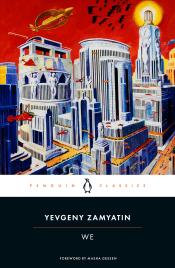
The exhilarating dystopian novel that inspired George Orwell's 1984 and foreshadowed the worst excesses of Soviet Russia.
Yevgeny Zamyatin's We is a powerfully inventive vision that has influenced writers from George Orwell to Ayn Rand. In a glass-enclosed city of absolute straight lines, ruled over by the all-powerful 'Benefactor', the citizens of the totalitarian society of OneState live out lives devoid of passion and creativity—until D-503, a mathematician who dreams in numbers, makes a discovery: he has an individual soul. Set in the twenty-sixth century AD, We is the classic dystopian novel and was the forerunner of works such as George Orwell's 1984 and Aldous Huxley's Brave New World. It was suppressed for many years in Russia and remains a resounding cry for individual freedom, yet is also a powerful, exciting and vivid work of science fiction. Clarence Brown's brilliant translation is based on the corrected text of the novel, first published in Russia in 1988 after more than sixty years' suppression.
Image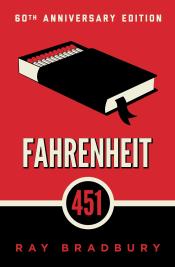
Fahrenheit 451 by Ray Bradbury
Sixty years after its original publication, Ray Bradbury’s internationally acclaimed novel Fahrenheit 451 stands as a classic of world literature set in a bleak, dystopian future. Today its message has grown more relevant than ever before.
Guy Montag is a fireman. His job is to destroy the most illegal of commodities, the printed book, along with the houses in which they are hidden. Montag never questions the destruction and ruin his actions produce, returning each day to his bland life and wife, Mildred, who spends all day with her television “family.” But when he meets an eccentric young neighbor, Clarisse, who introduces him to a past where people didn’t live in fear and to a present where one sees the world through the ideas in books instead of the mindless chatter of television, Montag begins to question everything he has ever known.
Image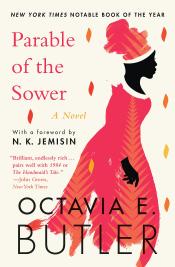
Parable of the Sower by Octavia E. Butler
In 2024, with the world descending into madness and anarchy, one woman begins a fateful journey toward a better future.
Lauren Olamina and her family live in one of the only safe neighborhoods remaining on the outskirts of Los Angeles. Behind the walls of their defended enclave, Lauren’s father, a preacher, and a handful of other citizens try to salvage what remains of a culture that has been destroyed by drugs, disease, war, and chronic water shortages. While her father tries to lead people on the righteous path, Lauren struggles with hyperempathy, a condition that makes her extraordinarily sensitive to the pain of others.
When fire destroys their compound, Lauren’s family is killed and she is forced out into a world that is fraught with danger. With a handful of other refugees, Lauren must make her way north to safety, along the way conceiving a revolutionary idea that may mean salvation for all mankind.
Image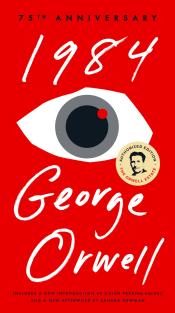
A masterpiece of rebellion and imprisonment where war is peace freedom is slavery and Big Brother is watching. Thought Police, Big Brother, Orwellian - these words have entered our vocabulary because of George Orwell's classic dystopian novel 1984. The story of one man's Nightmare Odyssey as he pursues a forbidden love affair through a world ruled by warring states and a power structure that controls not only information but also individual thought and memory 1984 is a prophetic haunting tale. More relevant than ever before 1984 exposes the worst crimes imaginable the destruction of truth freedom and individuality.
Image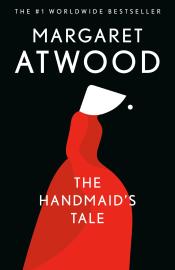
The Handmaid's Tale by Margaret Atwood
The Handmaid's Tale is an instant classic and eerily prescient cultural phenomenon, from "the patron saint of feminist dystopian fiction" ( New York Times ) The Handmaid’s Tale is a novel of such power that the reader will be unable to forget its images and its forecast. Set in the near future, it describes life in what was once the United States and is now called the Republic of Gilead, a monotheocracy that has reacted to social unrest and a sharply declining birthrate by reverting to, and going beyond, the repressive intolerance of the original Puritans. The regime takes the Book of Genesis absolutely at its word, with bizarre consequences for the women and men in its population. The story is told through the eyes of Offred, one of the unfortunate Handmaids under the new social order. In condensed but eloquent prose, by turns cool-eyed, tender, despairing, passionate, and wry, she reveals to us the dark corners behind the establishment’s calm facade, as certain tendencies now in existence are carried to their logical conclusions. The Handmaid’s Tale is funny, unexpected, horrifying, and altogether convincing. It is at once scathing satire, dire warning, and a tour de force. It is Margaret Atwood at her best.
Image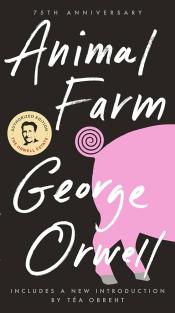
A farm is taken over by its overworked, mistreated animals. With flaming idealism and stirring slogans, they set out to create a paradise of progress, justice, and equality. Thus the stage is set for one of the most telling satiric fables ever penned –a razor-edged fairy tale for grown-ups that records the evolution from revolution against tyranny to a totalitarianism just as terrible.
When Animal Farm was first published, Stalinist Russia was seen as its target. Today it is devastatingly clear that wherever and whenever freedom is attacked, under whatever banner, the cutting clarity and savage comedy of George Orwell’s masterpiece have a meaning and message still ferociously fresh.
Image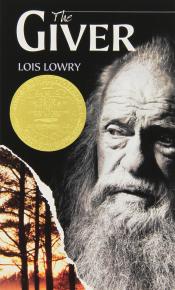
At the age of twelve, Jonas, a young boy from a seemingly utopian, futuristic world, is singled out to receive special training from The Giver, who alone holds the memories of the true joys and pain of life.
Image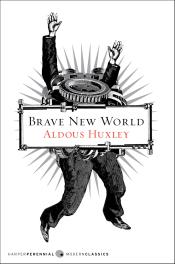
Brave New World by Aldous Huxley
Aldous Huxley's profoundly important classic of world literature, Brave New World is a searching vision of an unequal, technologically-advanced future where humans are genetically bred, socially indoctrinated, and pharmaceutically anesthetized to passively uphold an authoritarian ruling order–all at the cost of our freedom, full humanity, and perhaps also our souls. “A genius [who] who spent his life decrying the onward march of the Machine” (The New Yorker), Huxley was a man of incomparable talents: equally an artist, a spiritual seeker, and one of history’s keenest observers of human nature and civilization. Brave New World, his masterpiece, has enthralled and terrified millions of readers, and retains its urgent relevance to this day as both a warning to be heeded as we head into tomorrow and as thought-provoking, satisfying work of literature. Written in the shadow of the rise of fascism during the 1930s, Brave New Worldd likewise speaks to a 21st-century world dominated by mass-entertainment, technology, medicine and pharmaceuticals, the arts of persuasion, and the hidden influence of elites.
Image
Against the wishes of his mother, sixteen-year-old Ray Garraty is about to compete in the annual grueling match of stamina and wits known as The Long Walk. One hundred boys must keep a steady pace of four miles per hour without ever stopping... with the winner being awarded "The Prize"—anything he wants for the rest of his life. But, as part of this national tournament that sweeps through a dystopian America year after year, there are some harsh rules that Garraty and ninety-nine others must adhere to in order to beat out the rest. There is no finish line—the winner is the last man standing. Contestants cannot receive any outside aid whatsoever. Slow down under the speed limit and you're given a warning. Three warnings and you're out of the game—permanently...
Image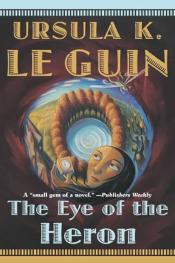
The Eye of the Heron by Ursula K. Le Guin
In Victoria on a former prison colony, two exiled groups--the farmers of Shantih and the City dwellers--live in apparent harmony. All is not as it seems, however. While the peace-loving farmers labor endlessly to provide food for the City, the City Bosses rule the Shantih with an iron fist. When a group of farmers decide to from a new settlement further away, the Bosses retaliate by threatening to crush the "rebellion."
Luz understands what it means to have no choices. Her father is a Boss and he has ruled over her life with the same iron fist. Luz wonders what it might be like to make her own choices. To be free to choose her own destiny.
When the crisis over the new settlement reaches a flash point, Luz will have her chance.
Image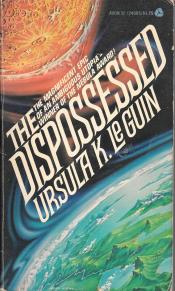
The Dispossessed: An Ambiguous Utopia by Ursula K. Le Guin
Shevek, a brilliant physicist, decides to take action. He will seek answers, question the unquestionable, and attempt to tear down the walls of hatred that have isolated his planet of anarchists from the rest of the civilized universe. To do this dangerous task will mean giving up his family and possibly his life—Shevek must make the unprecedented journey to the utopian mother planet, Urras, to challenge the complex structures of life and living, and ignite the fires of change.
Image
A futuristic story of tragic love and of the gradual extermination of the human race by plague, The Last Man is Mary Shelley's most important novel after Frankenstein. With intriguing portraits of Percy Bysshe Shelley and Lord Byron, the novel offers a vision of the future that expresses a reaction against Romanticism, and demonstrates the failure of the imagination and of art to redeem the doomed characters.
Image
A Clockwork Orange by Anthony Burgess
In Anthony Burgess's influential nightmare vision of the future, criminals take over after dark. Teen gang leader Alex narrates in fantastically inventive slang that echoes the violent intensity of youth rebelling against society. Dazzling and transgressive, A Clockwork Orange is a frightening fable about good and evil and the meaning of human freedom. This edition includes the controversial last chapter not published in the first edition, and Burgess’s introduction, “A Clockwork Orange Resucked.”
Film
Image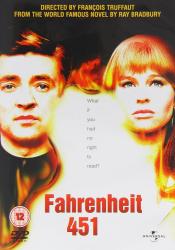
Montag, a regimented fireman in charge of burning the forbidden volumes, meets a revolutionary school teacher who dares to read. Suddenly he finds himself a hunted fugitive, forced to choose not only between two women, but between personal safety and intellectual freedom.
Image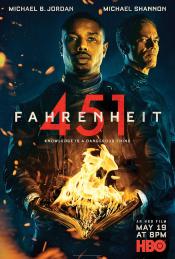
In a not too distant future, humans live a seemingly care-free existence where they're happy and productive. There is a "price" though for this life: They must place special drops in their eyes daily and follow the rules perfectly, including the rule that they never own or read books. Guy Montag is a firefighter. He doesn't fight fires though, but instead hunts down those people who refuse to follow the law and burns their books. Like everyone else, Guy has been taught that books are filled with inaccuracies and insane ideas. He continues to believe this lie until a meets someone who teaches him that the dreams in his mind can only be explained through the knowledge found in books. He also learns that rebels have come up with a new way to save books from the firefighters. When Guy's mentor, Captain Beatty, comes to realize that Guy has joined the rebellion, Guy must make a difficult decision to save the collective thoughts of the human race.
Image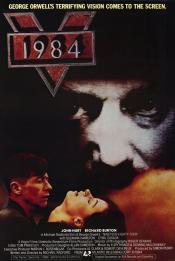
Winston Smith (John Hurt) endures a squalid existence in totalitarian Oceania under the constant surveillance of Big Brother. But his life takes a horrifying turn when he begins a forbidden love affair and commits the crime of independent thought. Sent to the chillingly labeled 'Ministry of Love, he is placed at the mercy of O'Brien (Richard Burton), a coolly treacherous leader determined to control his thoughts and crush his soul.
Image
The Handmaids Tale: Season One
The Handmaid's Tale is the story of life in the dystopia of Gilead, a totalitarian society in what was formerly the United States. Facing environmental disasters and a plunging birthrate, Gilead is ruled by a twisted fundamentalism in its militarized "return to traditional values." As one of the few remaining fertile women, Offred ... is a Handmaid in the Commander's household, belonging to the caste of women forced into sexual servitude as a last desperate attempt to repopulate the world. In this terrifying society, Offred must navigate between Commanders, their cruel wives, domestic Marthas, and her fellow Handmaids - where anyone could be a spy for Gilead - with one goal: to survive and find the daughter who was taken from her.
Image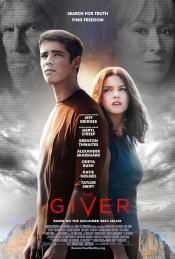
The story centers on Jonas, young man who lives in a supposedly ideal world of conformity and contentment. Yet as he begins to spend time with the elder, who is the sole keeper of all the community's memories, Jonas quickly begins to discover the dark and deadly truths of his community's secret past. At extreme odds, Jonas knows that he must escape their world to protect them all; a challenge that no one has ever succeeded at before.
Image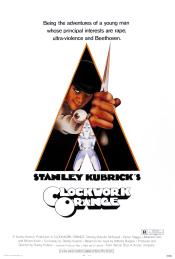
Being the adventures of a young man who couldn't resist pretty girls, or a bit of the old ultra-violence, who went to jail, was re-conditioned, and came out a different young man. Or was he?" So might opine your humble narrator, Alex. Alex and his droogs Georgie, Dim, and Pete are bored. Alex loves Ludwig van, milk bars, and mayhem. One night a botched burglary ends in murder. Apprehended by the police, Alex is tried, sentenced, and sent to prison for fourteen years. Two years into his sentence, he signs up for The Ludovico Treatment, and is released as cured. However, the world is a harsh and violent place, and now Alex is unable to defend himself. O my brothers, what will happen to poor Alex now?
Image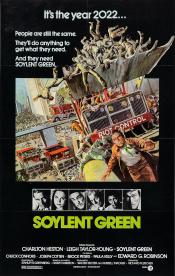
Charlton Heston plays a cop in this 21st century science-fiction horror story. The setting is New York, teeming with 40 million citizens, most of whom are out of work. Environmental erosion is almost complete and voluntary death is encouraged by government-sponsored clinics. For their food, the people have grown to rely almost totally on a greenish, wafer-like substance called soylent. As Heston investigates the murder of a magnate in the dictatorial Soylent Company, he comes face to face with the hideous truth about the secret ingredient of "Soylent Green."
- Adult Fiction
Novels
Image
The year 2024 marks the centenary of the first publication of the hugely significant novel We by the Russian author Yevgeny Zamyatin. The direct inspiration for George Orwell's 1984, We also influenced many other novels, such as Ursula K. Le Guin's The Dispossessed and Kurt Vonnegut's Player Piano. We ushered in a new genre - the future dystopia - and in doing so gave birth to the many dystopian novels and films which have found their way into our popular culture.
Inspired by Zamyatin's ground-breaking novel, The Utopia of Us features stories by some of the most imaginative of today's writers of speculative fiction, including Aliya Whiteley, R.T. Ester, Adrian Tchaikovsky, Anne Charnock, Tim Major, Anna Orridge, Douglas Thompson, Nadya Mercik, Liam Hogan, Fiona Mossman, Ian Whates, Michael Teasdale, Ana Sun, Rayn Epremian, and Sofia Samatar. A timely and necessary celebration of We, The Utopia of Us offers the reader stories of hope and despair, wonder and brutality. Most of all, The Utopia of Us reminds us of our humanity.
Image
"Remember, remember the fifth of November..."
A frightening and powerful tale of the loss of freedom and identity in a chillingly believable totalitarian world, V for Vendetta stands as one of the highest achievements of the comics medium and a defining work for creators Alan Moore and David Lloyd.
Set in an imagined future England that has given itself over to fascism, this groundbreaking story captures both the suffocating nature of life in an authoritarian police state and the redemptive power of the human spirit which rebels against it. Crafted with sterling clarity and intelligence, V for Vendetta brings an unequaled depth of characterization and verisimilitude to its unflinching account of oppression and resistance.
Image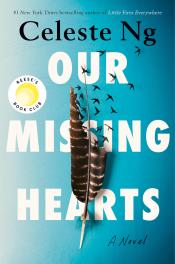
Our Missing Hearts by Celeste Ng
A novel about a mother’s unbreakable love in a world consumed by fear.
Twelve-year-old Bird Gardner lives a quiet existence with his loving but broken father, a former linguist who now shelves books in a university library. Bird knows to not ask too many questions, stand out too much, or stray too far. For a decade, their lives have been governed by laws written to preserve “American culture” in the wake of years of economic instability and violence. To keep the peace and restore prosperity, the authorities are now allowed to relocate children of dissidents, especially those of Asian origin, and libraries have been forced to remove books seen as unpatriotic—including the work of Bird’s mother, Margaret, a Chinese American poet who left the family when he was nine years old.
Bird has grown up disavowing his mother and her poems; he doesn’t know her work or what happened to her, and he knows he shouldn’t wonder. But when he receives a mysterious letter containing only a cryptic drawing, he is pulled into a quest to find her. His journey will take him back to the many folktales she poured into his head as a child, through the ranks of an underground network of librarians, into the lives of the children who have been taken, and finally to New York City, where a new act of defiance may be the beginning of much-needed change.
Image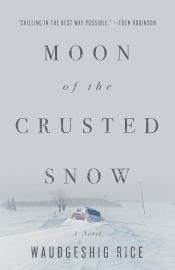
Moon of the Crusted Snow by Waubgeshig Rice
With winter looming, a small northern Anishinaabe community goes dark. Cut off, people become passive and confused. Panic builds as the food supply dwindles. While the band council and a pocket of community members struggle to maintain order, an unexpected visitor arrives, escaping the crumbling society to the south. Soon after, others follow.
The community leadership loses its grip on power as the visitors manipulate the tired and hungry to take control of the reserve. Tensions rise and, as the months pass, so does the death toll due to sickness and despair. Frustrated by the building chaos, a group of young friends and their families turn to the land and Anishinaabe tradition in hopes of helping their community thrive again. Guided through the chaos by an unlikely leader named Evan Whitesky, they endeavor to restore order while grappling with a grave decision.
Blending action and allegory, Moon of the Crusted Snow upends our expectations. Out of catastrophe comes resilience. And as one society collapses, another is reborn.Also read Moon of the Turning Leaves.
Image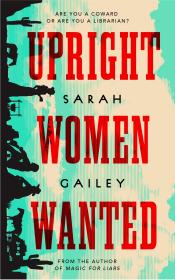
Upright Women Wanted by Sarah Gailey
“That girl’s got more wrong notions than a barn owl’s got mean looks.”
Esther is a stowaway. She’s hidden herself away in the Librarian’s book wagon in an attempt to escape the marriage her father has arranged for her—a marriage to the man who was previously engaged to her best friend. Her best friend who she was in love with. Her best friend who was just executed for possession of resistance propaganda.
The future American Southwest is full of bandits, fascists, and queer librarian spies on horseback trying to do the right thing. They'll bring the fight to you.
In Upright Women Wanted, award-winning author Sarah Gailey reinvents the pulp Western with an explicitly antifascist, near-future story of queer identity.
Image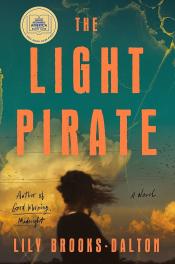
The Light Pirate by Lily Brooks-Dalton
Set in the near future, this hopeful story of survival and resilience follows Wanda—a luminous child born out of a devastating hurricane—as she navigates a rapidly changing world.
Florida is slipping away. As devastating weather patterns and rising sea levels wreak gradual havoc on the state’s infrastructure, a powerful hurricane approaches a small town on the southeastern coast. Kirby Lowe, an electrical line worker, his pregnant wife, Frida, and their two sons, Flip and Lucas, prepare for the worst. When the boys go missing just before the hurricane hits, Kirby heads out into the high winds in search of his children. Left alone, Frida goes into premature labor and gives birth to an unusual child, Wanda, whom she names after the catastrophic storm that ushers her into a society closer to collapse than ever before.
As Florida continues to unravel, Wanda grows. Moving from childhood to adulthood, adapting not only to the changing landscape, but also to the people who stayed behind in a place abandoned by civilization, Wanda loses family, gains community, and ultimately, seeks adventure, love, and purpose in a place remade by nature.
Told in four parts—power, water, light, and time— The Light Pirate mirrors the rhythms of the elements and the sometimes quick, sometimes slow dissolution of the world as we know it. It is a meditation on the changes we would rather not see, the future we would rather not greet, and a call back to the beauty and violence of an untamable wilderness.
Image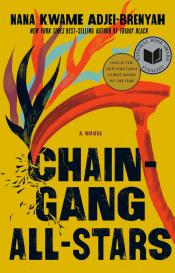
Chain-Gang All-Stars by Nana Kwame Adjei-Brenyah
Two top women gladiators fight for their freedom within a depraved private prison system not so far-removed from America's own.
Loretta Thurwar and Hamara "Hurricane Staxxx" Stacker are the stars of Chain-Gang All-Stars, the cornerstone of CAPE, or Criminal Action Penal Entertainment, a highly-popular, highly-controversial, profit-raising program in America's increasingly dominant private prison industry. It's the return of the gladiators and prisoners are competing for the ultimate prize: their freedom.
In CAPE, prisoners travel as Links in Chain-Gangs, competing in death-matches for packed arenas with righteous protestors at the gates. Thurwar and Staxxx, both teammates and lovers, are the fan favorites. And if all goes well, Thurwar will be free in just a few matches, a fact she carries as heavily as her lethal hammer. As she prepares to leave her fellow Links, she considers how she might help preserve their humanity, in defiance of these so-called games, but CAPE's corporate owners will stop at nothing to protect their status quo and the obstacles they lay in Thurwar's path have devastating consequences.
Moving from the Links in the field to the protestors to the CAPE employees and beyond, Chain-Gang All-Stars is a kaleidoscopic, excoriating look at the American prison system's unholy alliance of systemic racism, unchecked capitalism, and mass incarceration, and a clear-eyed reckoning with what freedom in this country really means.
Image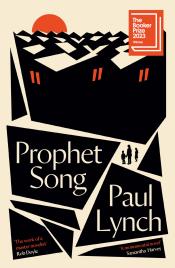
A fearless portrait of a society on the brink as a mother faces a terrible choice, from an internationally award-winning author
On a dark, wet evening in Dublin, scientist and mother-of-four Eilish Stack answers her front door to find the GNSB on her step. Two officers from Ireland’s newly formed secret police are here to interrogate her husband, a trade unionist.
Ireland is falling apart. The country is in the grip of a government turning towards tyranny and Eilish can only watch helplessly as the world she knew disappears. When first her husband and then her eldest son vanish, Eilish finds herself caught within the nightmare logic of a collapsing society.
How far will she go to save her family? And what – or who – is she willing to leave behind?
Exhilarating, terrifying and propulsive, Prophet Song is a work of breathtaking originality, offering a devastating vision of a country at war and a deeply human portrait of a mother’s fight to hold her family together.
Image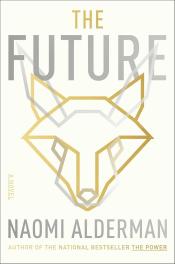
When Martha Einkorn fled her father’s isolated compound in Oregon, she never expected to find herself working for a powerful social media mogul hell-bent on controlling everything. Now she’s surrounded by mega-rich companies designing private weather, predictive analytics, and covert weaponry, while spouting technological prophecy. Martha may have left the cult, but if the apocalyptic warnings in her father’s fox and rabbit sermon—once a parable to her—are starting to come true, how much future is actually left?
Across the world, in a mall in Singapore, Lai Zhen, an internet-famous survivalist, flees from an assassin. She’s cornered, desperate and—worst of all—might die without ever knowing what's going on. Suddenly, a remarkable piece of software appears on her phone telling her exactly how to escape. Who made it? What is it really for? And if those behind it can save her from danger, what do they want from her, and what else do they know about the future?
Martha and Zhen’s worlds are about to collide. An explosive chain of events is set in motion. While a few billionaires assured of their own safety lead the world to destruction, Martha’s relentless drive and Zhen’s insatiable curiosity could lead to something beautiful or the cataclysmic end of civilization.
Image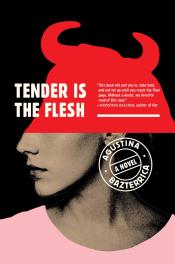
Tender is the Flesh by Agustina Bazterrica
Working at the local processing plant, Marcos is in the business of slaughtering humans—though no one calls them that anymore.
His wife has left him, his father is sinking into dementia, and Marcos tries not to think too hard about how he makes a living. After all, it happened so quickly. First, it was reported that an infectious virus has made all animal meat poisonous to humans. Then governments initiated the “Transition.” Now, eating human meat—“special meat”—is legal. Marcos tries to stick to numbers, consignments, processing.
Then one day he’s given a a live specimen of the finest quality. Though he’s aware that any form of personal contact is forbidden on pain of death, little by little he starts to treat her like a human being. And soon, he becomes tortured by what has been lost—and what might still be saved.
Image
Friday Black by Nana Kwame Adjei-Brenyah
From the start of this extraordinary debut, Nana Kwame Adjei-Brenyah’s writing will grab you, haunt you, enrage and invigorate you. By placing ordinary characters in extraordinary situations, Adjei-Brenyah reveals the violence, injustice, and painful absurdities that Black men and women contend with every day in this country.
These stories explore urgent instances of racism and cultural unrest, and the ways we fight for humanity in an unforgiving world. In “The Finkelstein Five,” Adjei-Brenyah reckons with the brutal prejudice of our justice system. In “Zimmer Land,” we see a far-too-easy-to-believe imagining of racism as sport. And “Friday Black” and “How to Sell a Jacket as Told by IceKing” show the horrors of consumerism and the toll it takes on us all.
Entirely fresh in its style and perspective, and sure to appeal to fans of Colson Whitehead, Marlon James, and George Saunders, Friday Black confronts readers with a complicated, insistent, wrenching chorus of emotions, the final note of which, remarkably, is hope.
Image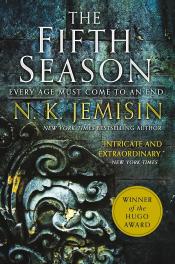
The Fifth Season by N.K. Jemisin
This is the way the world ends. Again.
Three terrible things happen in a single day. Essun, a woman living an ordinary life in a small town, comes home to find that her husband has brutally murdered their son and kidnapped their daughter. Meanwhile, mighty Sanze -- the world-spanning empire whose innovations have been civilization's bedrock for a thousand years -- collapses as most of its citizens are murdered to serve a madman's vengeance. And worst of all, across the heart of the vast continent known as the Stillness, a great red rift has been torn into the heart of the earth, spewing ash enough to darken the sky for years. Or centuries.
Now Essun must pursue the wreckage of her family through a deadly, dying land. Without sunlight, clean water, or arable land, and with limited stockpiles of supplies, there will be war all across the Stillness: a battle royale of nations not for power or territory, but simply for the basic resources necessary to get through the long dark night. Essun does not care if the world falls apart around her. She'll break it herself, if she must, to save her daughter.
Image
Candace Chen, a millennial drone self-sequestered in a Manhattan office tower, is devoted to routine. So she barely notices when a plague of biblical proportions sweeps New York. Then Shen Fever spreads. Families flee. Companies halt operations. The subways squeak to a halt. Soon entirely alone, still unfevered, she photographs the eerie, abandoned city as the anonymous blogger NY Ghost.
Candace won’t be able to make it on her own forever, though. Enter a group of survivors, led by the power-hungry IT tech Bob. They’re traveling to a place called the Facility, where, Bob promises, they will have everything they need to start society anew. But Candace is carrying a secret she knows Bob will exploit. Should she escape from her rescuers?
A send-up and takedown of the rituals, routines, and missed opportunities of contemporary life, Ling Ma’s Severance is a quirky coming-of-adulthood tale and satire.
Image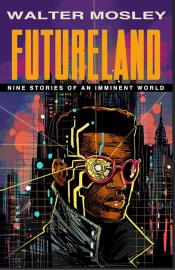
Futureland: Nine Stories of an Imminent World by Walter Mosley
The citizenry of America struggles for survival in a dangerous, twisted future.
In “Whispers in the Dark,” an ex-con sells his organs to ensure his brilliant nephew’s future. The boy will grow up to have the highest IQ ever recorded, but the uncle, who sold his eyes, won’t be able to see it. In “Voices,” a history professor becomes addicted to a drug called pulse, which gives him access to a world of vivid fantasy while tearing his brain to shreds. By the time the professor qualifies for a brain transplant, he’s no longer sure what’s real and what’s imagined. And in “Angel’s Island,” a convict in the world’s largest private prison reveals the facility’s chilling secrets.
In this critically acclaimed collection of stories, noir legend Walter Mosley takes his unique vision of American society into the future. As the nation descends into chaos, its citizens wonder, Is the world ending, or has the apocalypse already come and gone?
Image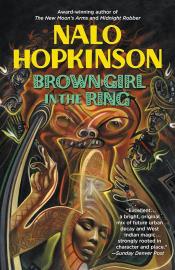
Brown Girl in the Ring by Nalo Hopkinson
The rich and privileged have fled the city, barricaded it behind roadblocks, and left it to crumble. The inner city has had to rediscover old ways-farming, barter, herb lore. But now the monied need a harvest of bodies, and so they prey upon the helpless of the streets. With nowhere to turn, a young woman must open herself to ancient truths, eternal powers, and the tragic mystery surrounding her mother and grandmother. She must bargain with gods, and give birth to new legends.
Image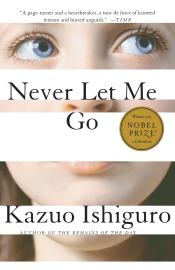
Never Let Me Go by Kazuo Ishiguro
Hailsham seems like a pleasant English boarding school, far from the influences of the city. Its students are well tended and supported, trained in art and literature, and become just the sort of people the world wants them to be. But, curiously, they are taught nothing of the outside world and are allowed little contact with it.
Within the grounds of Hailsham, Kathy grows from schoolgirl to young woman, but it’s only when she and her friends Ruth and Tommy leave the safe grounds of the school (as they always knew they would) that they realize the full truth of what Hailsham is.
Never Let Me Go breaks through the boundaries of the literary novel. It is a gripping mystery, a beautiful love story, and also a scathing critique of human arrogance and a moral examination of how we treat the vulnerable and different in our society. In exploring the themes of memory and the impact of the past, Ishiguro takes on the idea of a possible future to create his most moving and powerful book to date.Film
Image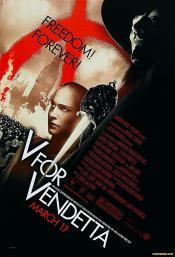
Set against the futuristic landscape of totalitarian Britain, the story of a young working-class woman, Evey, who is rescued from a life-and-death situation by a masked man known only as 'V.' Incomparably charismatic and ferociously skilled in the art of combat and deception, 'V' ignites a revolution when he urges his fellow citizens to rise up against tyranny and oppression. As Evey uncovers the truth about 'V's' mysterious background, she also discovers the truth about herself. She becomes his ally in his plan to bring freedom and justice to a cruel and corrupt society.
Image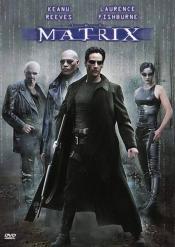
Neo (Reeves)-mild-mannered software author by day, feared hacker by night-is recruited into a cell of cyber-rebels, led by Morpheus (Fishburne) and the warrior Trinity (Moss). They have made a fundamental discovery about the world: It does not exist. It is only a seedy utopia where humanity is preserved, protected, and endlessly recycled by a mega-computer. Cypher (Pantoliano) turns traitorous for access to comforts unmatched by the drab post-apocalyptic real world, while Agent Smith (Weaving) dismisses humans as "a plague"--For which non-organic life is "the cure."
Image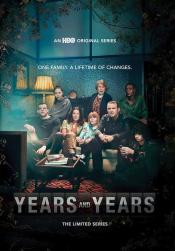
Years and Years: The Limited Series (2020)
As Britain and the world are shaken by volatile political, economic, and technological developments, members of the Manchester Lyons family unite on one crucial night in 2019. Over the next fifteen years, the twists and turns of their lives are explored as viewers find out if this ordinary family could change the world.
Image
Los Angeles, 2019: Rick Deckard of the LAPD's Blade Runner unit prowls the steel & microchip jungle of the 21st century. His job is to track down and eliminate assumed humanoids known as 'replicants.' Replicants were declared illegal after a bloody mutiny on an Off-World Colony, and are to be terminated upon detection. He wants to get out of the force, but is drawn back in when 6 "skin jobs," the slang for replicants, hijack a ship back to Earth. The city that Deckard must search for his prey is a huge, sprawling, bleak vision of the future. This 2007 "final cut" was remastered with improved visual and sound effects, and made some revisions to the 1992 "director's cut" revision.
Image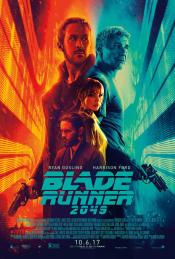
A young blade runner's discovery of a long buried secret leads him to track down former blade runner Rick Deckard, who's been missing for thirty years.
Image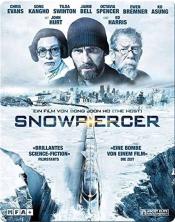
The film is set in the future (AD 2031) where, after a failed experiment to stop global warming, an ice age kills off all life on the planet except for the inhabitants of the Snowpiercer, a train that travels around the globe and is powered by a sacred perpetual-motion engine. Its inhabitants are divided by class; the lower-class passengers in one of the last cars stage an uprising, moving car by car up to the front of the train, where the oppressive rich and powerful live.
Image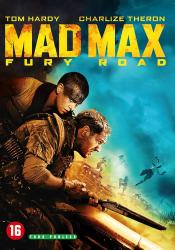
A return to the world of the Road Warrior, Max Rockatansky. Haunted by his turbulent past, he believes the best way to survive is to wander alone. Nevertheless, he becomes swept up with a group fleeing across the Wasteland in a War Rig driven by an elite Imperator, Furiosa. They are escaping a Citadel tyrannized by the Immortan Joe, from whom something irreplaceable has been taken. Enraged, the Warlord with his gangs, pursues the rebels ruthlessly in the high-octane Road War that follows.
Image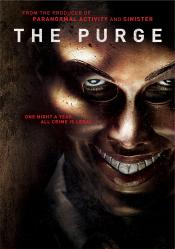
In an America wracked by crime and overcrowded prisons, the government has sanctioned an annual 12-hour period in which any and all criminal activity, including murder, becomes legal. On this night plagued by violence and an epidemic of crime, one family wrestles with the decision of who they will become when a stranger comes.
Image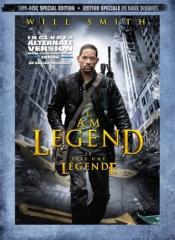
Robert Neville is the last human survivor in what is left of New York City. A pandemic has left only 1% of the population alive and most of those who survived are no longer human. The infected, now lurking in the shadows, watch Neville's every move. Perhaps mankind's last, best hope, Neville is driven by the only one remaining mission: to find a way to reverse the effects of the virus using his own immune blood.
- YA Fiction
Novels
Image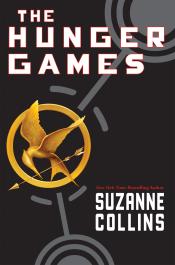
The Hunger Games by Suzanne Collins
Could you survive on your own in the wild, with every one out to make sure you don't live to see the morning?
In the ruins of a place once known as North America lies the nation of Panem, a shining Capitol surrounded by twelve outlying districts. The Capitol is harsh and cruel and keeps the districts in line by forcing them all to send one boy and one girl between the ages of twelve and eighteen to participate in the annual Hunger Games, a fight to the death on live TV.
Sixteen-year-old Katniss Everdeen, who lives alone with her mother and younger sister, regards it as a death sentence when she steps forward to take her sister's place in the Games. But Katniss has been close to dead before—and survival, for her, is second nature. Without really meaning to, she becomes a contender. But if she is to win, she will have to start making choices that weight survival against humanity and life against love.
Image
Connor, Risa, and Lev are running for their lives.
The Second Civil War was fought over reproductive rights. The chilling resolution: Life is inviolable from the moment of conception until age thirteen. Between the ages of thirteen and eighteen, however, parents can have their child "unwound," whereby all of the child's organs are transplanted into different donors, so life doesn't technically end. Connor is too difficult for his parents to control. Risa, a ward of the state, is not enough to be kept alive. And Lev is a tithe, a child conceived and raised to be unwound. Together, they may have a chance to escape and to survive.
Image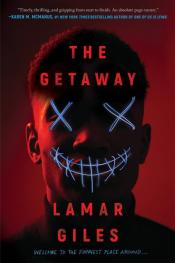
Welcome to the funnest spot around...
Jay is living his best life at Karloff Country, one of the world’s most famous resorts. He’s got his family, his crew, and an incredible after-school job at the property’s main theme park. Life isn’t so great for the rest of the world, but when people come here to vacation, it’s to get away from all that.
As things outside get worse, trouble starts seeping into Karloff. First, Jay’s friend Connie and her family disappear in the middle of the night and no one will talk about it. Then the richest and most powerful families start arriving, only... they aren’t leaving. Unknown to the employees, the resort has been selling shares in an end-of-the-world oasis. The best of the best at the end of days. And in order to deliver the top-notch customer service the wealthy clientele paid for, the employees will be at their total beck and call.
Whether they like it or not.
Yet Karloff Country didn’t count on Jay and his crew—and just how far they’ll go to find out the truth and save themselves. But what’s more dangerous: the monster you know in your home or the unknown nightmare outside the walls?
Image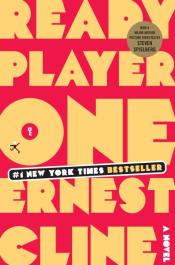
Ready Player One by Ernest Cline
IN THE YEAR 2044, reality is an ugly place. The only time teenage Wade Watts really feels alive is when he's jacked into the virtual utopia known as the OASIS. Wade's devoted his life to studying the puzzles hidden within this world's digital confines, puzzles that are based on their creator's obsession with the pop culture of decades past and that promise massive power and fortune to whoever can unlock them.
But when Wade stumbles upon the first clue, he finds himself beset by players willing to kill to take this ultimate prize. The race is on, and if Wade's going to survive, he'll have to win—and confront the real world he's always been so desperate to escape.
Image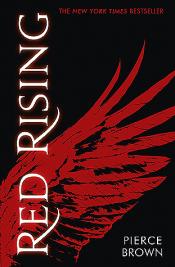
"I live for the dream that my children will be born free," she says. "That they will be what they like. That they will own the land their father gave them."
"I live for you," I say sadly.
Eo kisses my cheek. "Then you must live for more."
Darrow is a Red, a member of the lowest caste in the color-coded society of the future. Like his fellow Reds, he works all day, believing that he and his people are making the surface of Mars livable for future generations.
Yet he spends his life willingly, knowing that his blood and sweat will one day result in a better world for his children.
But Darrow and his kind have been betrayed. Soon he discovers that humanity already reached the surface generations ago. Vast cities and sprawling parks spread across the planet. Darrow—and Reds like him—are nothing more than slaves to a decadent ruling class.
Inspired by a longing for justice, and driven by the memory of lost love, Darrow sacrifices everything to infiltrate the legendary Institute, a proving ground for the dominant Gold caste, where the next generation of humanity's overlords struggle for power. He will be forced to compete for his life and the very future of civilization against the best and most brutal of Society's ruling class. There, he will stop at nothing to bring down his enemies... even if it means he has to become one of them to do so.
Image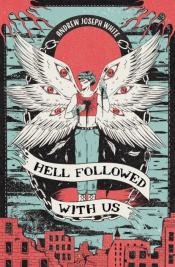
Hell Followed With Us by Andrew Joseph White
Prepare to die. His kingdom is near.
Sixteen-year-old trans boy Benji is on the run from the cult that raised him—the fundamentalist sect that unleashed Armageddon and decimated the world’s population. Desperately, he searches for a place where the cult can’t get their hands on him, or more importantly, on the bioweapon they infected him with.
But when cornered by monsters born from the destruction, Benji is rescued by a group of teens from the local Acheson LGBTQ+ Center, affectionately known as the ALC. The ALC’s leader, Nick, is gorgeous, autistic, and a deadly shot, and he knows Benji’s darkest secret: the cult’s bioweapon is mutating him into a monster deadly enough to wipe humanity from the earth once and for all.
Still, Nick offers Benji shelter among his ragtag group of queer teens, as long as Benji can control the monster and use its power to defend the ALC. Eager to belong, Benji accepts Nick’s terms…until he discovers the ALC’s mysterious leader has a hidden agenda, and more than a few secrets of his own.
A furious, queer debut novel about embracing the monster within and unleashing its power against your oppressors.
Image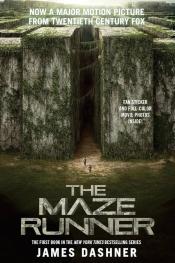
The Maze Runner by James Dashner
If you ain’t scared, you ain’t human.
When Thomas wakes up in the lift, the only thing he can remember is his name. He’s surrounded by strangers—boys whose memories are also gone.
Nice to meet ya, shank. Welcome to the Glade.
Outside the towering stone walls that surround the Glade is a limitless, ever-changing maze. It’s the only way out—and no one’s ever made it through alive.
Everything is going to change.
Then a girl arrives. The first girl ever. And the message she delivers is terrifying.
Remember. Survive. Run.
Image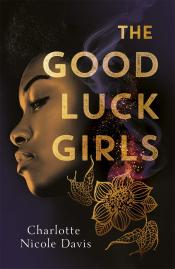
The Good Luck Girls by Charlotte Nicole Davis
Westworld meets The Handmaid's Tale in this stunning fantasy adventure from debut author Charlotte Nicole Davis.
Aster, the protector
Violet, the favorite
Tansy, the medic
Mallow, the fighter
Clementine, the catalyst
THE GOOD LUCK GIRLS
The country of Arketta calls them Good Luck Girls--they know their luck is anything but. Sold to a "welcome house" as children and branded with cursed markings. Trapped in a life they would never have chosen.
When Clementine accidentally murders a man, the girls risk a dangerous escape and harrowing journey to find freedom, justice, and revenge in a country that wants them to have none of those things. Pursued by Arketta's most vicious and powerful forces, both human and inhuman, their only hope lies in a bedtime story passed from one Good Luck Girl to another, a story that only the youngest or most desperate would ever believe.
It's going to take more than luck for them all to survive.
Image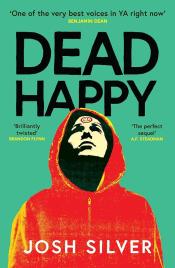
Friends. Welcome to Elmhallow.
Seb, along with a select group of participants, finds himself washed up on an isolated island called Elmhallow, under the guardianship of a mysterious couple. As the experiment steps up another level, Seb is forced to team up with Eleanor once more.
But where is Finn? And what does HappyHead have in store for them next?
Image
Nubia: The Awakening by Omar Epps and Clarence A. Haynes
For Zuberi, Uzochi, and Lencho, Nubia is a mystery. Before they were born, a massive storm destroyed their ancestral homeland, forcing their families to flee across the ocean to New York City. Nubia, a utopic island nation off the coast of West Africa, was no more, and their parents' sorrow was too deep for them to share much of their history beyond the folklore.
But New York, ravaged by climate change and class division, is far from a safe haven for refugees, and Nubians live as outcasts, struggling to survive in the constantly flooding lower half of Manhattan, while the rich thrive in the tech-driven sky city known as the Up High.
To many, being Nubian means you're fated for a life plagued by difficulties and disrespect. But Zuberi, Uzochi, and Lencho are beginning to feel there might be more. Something within them is changing, giving each of them extraordinary powers. Extraordinary and terrifying powers that seem to be tied to the secrets their parents have kept from them.
And there are people Up High watching, eager to do anything they can to become even more powerful than they already are. Now Zuberi, Uzochi, and Lencho will be faced with the choice--do they use their inheritance to lift their people, or to leave them behind. The fate of their city, and their people, hangs in the balance.
Image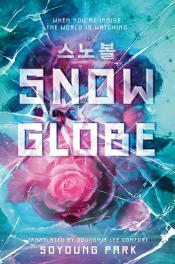
In a world of constant winter, only the citizens of the climate-controlled city of Snowglobe can escape the bitter cold—but this perfect society is hiding dark and dangerous secrets within its frozen heart.
Enclosed under a vast dome, Snowglobe is the last place on Earth that’s warm. Outside Snowglobe is a frozen wasteland, and every day, citizens face the icy world to get to their jobs at the power plant, where they produce the energy Snowglobe needs. Their only solace comes in the form of twenty-four-hour television programming streamed directly from the domed city.
The residents of Snowglobe have fame, fortune, and above all, safety from the desolation outside their walls. In exchange, their lives are broadcast to the less fortunate outside, who watch eagerly, hoping for the chance to one day become actors themselves.
Chobahm lives for the time she spends watching the shows produced inside Snowglobe. Her favorite? Goh Around, starring Goh Haeri, Snowglobe’s biggest star—and, it turns out, the key to getting Chobahm her dream life.
Because Haeri is dead, and Chobahm has been chosen to take her place. Only, life inside Snowglobe is nothing like what you see on television. Reality is a lie, and truth seems to be forever out of reach.
Image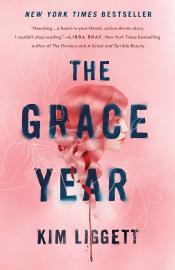
No one speaks of the grace year. It’s forbidden.
In Garner County, girls are told they have the power to lure grown men from their beds, to drive women mad with jealousy. They believe their very skin emits a powerful aphrodisiac, the potent essence of youth, of a girl on the edge of womanhood. That’s why they’re banished for their sixteenth year, to release their magic into the wild so they can return purified and ready for marriage. But not all of them will make it home alive.
Sixteen-year-old Tierney James dreams of a better life—a society that doesn’t pit friend against friend or woman against woman, but as her own grace year draws near, she quickly realizes that it’s not just the brutal elements they must fear. It’s not even the poachers in the woods, men who are waiting for a chance to grab one of the girls in order to make a fortune on the black market. Their greatest threat may very well be each other.
With sharp prose and gritty realism, The Grace Year examines the complex and sometimes twisted relationships between girls, the women they eventually become, and the difficult decisions they make in-between.
Image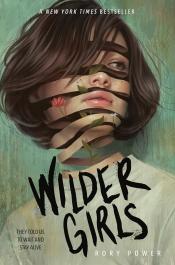
It's been eighteen months since the Raxter School for Girls was put under quarantine. Since the Tox hit and pulled Hetty's life out from under her.
It started slow. First the teachers died one by one. Then it began to infect the students, turning their bodies strange and foreign. Now, cut off from the rest of the world and left to fend for themselves on their island home, the girls don't dare wander outside the school's fence, where the Tox has made the woods wild and dangerous. They wait for the cure they were promised as the Tox seeps into everything.
But when Byatt goes missing, Hetty will do anything to find her, even if it means breaking quarantine and braving the horrors that lie beyond the fence. And when she does, Hetty learns that there's more to their story, to their life at Raxter, than she could have ever thought true.
Image
Trail of Lightning by Rebecca Roanhorse
While most of the world has drowned beneath the sudden rising waters of a climate apocalypse, Dinétah (formerly the Navajo reservation) has been reborn. The gods and heroes of legend walk the land, but so do monsters.
Maggie Hoskie is a Dinétah monster hunter, a supernaturally gifted killer. When a small town needs help finding a missing girl, Maggie is their last—and best—hope. But what Maggie uncovers about the monster is much larger and more terrifying than anything she could imagine.
Maggie reluctantly enlists the aid of Kai Arviso, an unconventional medicine man, and together they travel to the rez to unravel clues from ancient legends, trade favors with tricksters, and battle dark witchcraft in a patchwork world of deteriorating technology.
As Maggie discovers the truth behind the disappearances, she will have to confront her past—if she wants to survive.
Welcome to the Sixth World.
Image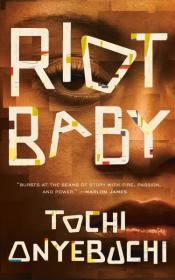
Ella has a Thing. She sees a classmate grow up to become a caring nurse. A neighbor's son murdered in a drive-by shooting. Things that haven't happened yet. Kev, born while Los Angeles burned around them, wants to protect his sister from a power that could destroy her. But when Kev is incarcerated, Ella must decide what it means to watch her brother suffer while holding the ability to wreck cities in her hands.
Rooted in the hope that can live in anger, Riot Baby is as much an intimate family story as a global dystopian narrative. It burns fearlessly toward revolution and has quietly devastating things to say about love, fury, and the black American experience.
Ella and Kev are both shockingly human and immeasurably powerful. Their childhoods are defined and destroyed by racism. Their futures might alter the world.Film
Image
Set in a future where the Capitol selects a boy and girl from the twelve districts to fight to the death on live television. Katniss Everdeen volunteers to take her younger sister's place for the latest match.
Image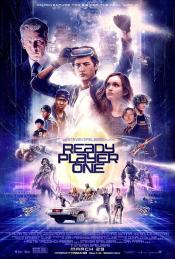
It's 2045, with the world on the brink of chaos and collapse, but the people have found salvation in the OASIS, an expansive virtual reality universe created by the brilliant and eccentric James Halliday. When Halliday dies, he leaves his immense fortune to the first person to find a digital Easter egg he has hidden somewhere in the OASIS, sparking a contest that grips the entire world. When an unlikely young hero named Wade Watts decides to join the contest, he is hurled into a breakneck, reality-bending treasure hunt through a fantastical universe of mystery, discovery and danger.
Image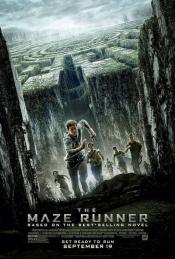
When Thomas wakes up trapped in a massive maze with a group of other boys, he has no memory of the outside world other than strange dreams about a mysterious organization known as W.C.K.D. Only by piecing together fragments of his past with clues he discovers in the maze can Thomas hope to uncover his true purpose and a way to escape.
Image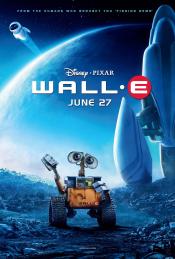
After hundreds of lonely years, a waste management robot finds a new purpose in life. With only a cockroach for a friend, he finds true love in another robot sent on a mission to Earth to see if it is safe for human life.
Reflecting on Dystopian Fiction
Dystopian Fiction, from We to Sunrise on the Reaping, is most often a reflection of the anxieties of reality. These anxieties range anywhere from concern over climate change, wildfires, storms, and the disappearance of species to concern about AI systems stealing the creative works of humans, taking over jobs, or becoming a threat to the world; to observations of authoritarian actions of political figures; to the realities of war and oppressive violence; to algorhythms monitoring digital habits or facial recognition programs pulling data about people walking down the street.
These real concerns have informed the themes of this speculative fiction subgenre for decades. Why not take some time to learn about and explore these themes from the lens of the real world? Below is a list of non-fiction books relating to the topics that most often inspire the themes of dystopian fiction.
- In Need of Non-Fiction?
Themes: Politics and Information
Image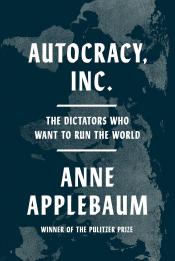
Autocracy, Inc. by Anne Applebaum
All of us have in our minds a cartoon image of what an autocratic state looks like, with a bad man at the top. But in the 21st century, that cartoon bears little resemblance to reality. Nowadays, autocracies are run not by one bad guy, but by sophisticated networks composed of kleptocratic financial structures, security services and professional propagandists. The members of these networks are connected not only within a given country, but among many countries. The corrupt, state-controlled companies in one dictatorship do business with corrupt, state-controlled companies in another. The police in one country can arm, equip, and train the police in another. The propagandists share resources—the troll farms that promote one dictator’s propaganda can also be used to promote the propaganda of another—and themes, pounding home the same messages about the weakness of democracy and the evil of America. Unlike military or political alliances from other times and places, this group doesn’t operate like a bloc, but rather like an agglomeration of Autocracy, Inc. Their relations are not based on values, but are rather transactional, which is why they operate so easily across ideological, geographical, and cultural lines. In truth, they are in full agreement about only one: Their dislike of us, the inhabitants of the democratic world, and their desire to see both our political systems and our values undermined. That shared understanding of the world—where it comes from, why it lasts, how it works, how the democratic world has unwittingly helped to consolidate it, and how we can help bring it down—is the subject of this book.
Image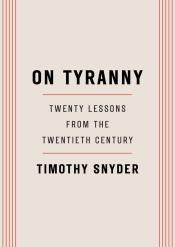 Image
Image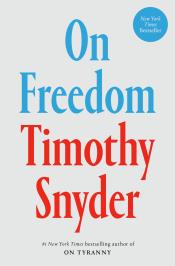
On Tyranny: Twenty Lessons from the Twentieth Century by Timothy Snyder
With Twenty Lessons, Snyder draws from the darkest hours of the twentieth century to provide hope for the twenty-first. As he writes, “Americans are no wiser than the Europeans who saw democracy yield to fascism, Nazism and communism. Our one advantage is that we might learn from their experience.” Twenty Lessons is a call to arms and a guide to resistance, with invaluable ideas for how we can preserve our freedoms in the uncertain years to come.
On Freedom takes us on a thrilling intellectual journey. Drawing on the work of philosophers and political dissidents, conversations with contemporary thinkers, and his own experiences coming of age in a time of American exceptionalism, Snyder identifies the practices and attitudes—the habits of mind—that will allow us to design a government in which we and future generations can flourish. We come to appreciate the importance of traditions (championed by the right) but also the role of institutions (the purview of the left). Intimate yet ambitious, this book helps forge a new consensus rooted in a politics of abundance, generosity, and grace.
Image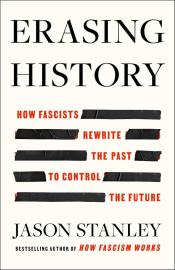
Erasing History: How Fascists Rewrite the Past to Control the Future by Jason F. Stanley
From Yale professor and bestselling author of How Fascism Works, a searing confrontation with the authoritarian right’s efforts to annihilate public education, silence teachers, and use taxpayer money to undo a century of work to advance social justice action on race, gender, sexuality, and class.
Combining historical research with an in-depth analysis of our modern political landscape, Erasing History issues a dire warning for America and the the worst fascist movements of humanity’s past began in schools; the same place so many of today’s right-wing political parties have trained their most vicious attacks.
Yale professor Jason Stanley exposes the true danger of the right’s tactics and traces their inspirations and funding back to some of the most dangerous ideas of human history. He shows that hearts and minds are won in our elementary schools, high schools, and universities—and that governments are currently ill-prepared to do the work of uprooting fascist policies being foisted upon our children through school boards, in courtrooms, and in the boardrooms of the companies trusted to train our teachers and create the materials they’ll share with their students.
Deeply informed and urgently needed, this book is a vibrant call to action for lovers of democracy worldwide.
Image Image
Image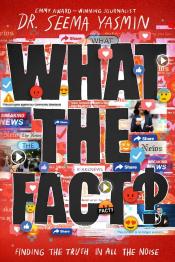
True of False: A CIA Analyst's Guide to Spotting Fake News by Cindy L. Otis
In True or False, former CIA analyst Cindy Otis will take readers through the history and impact of misinformation over the centuries, sharing stories from the past and insights that readers today can gain from them. Then, she shares lessons learned in over a decade working for the CIA, including actionable tips on how to spot fake news, how to make sense of the information we receive each day, and, perhaps most importantly, how to understand and see past our own information biases, so that we can think critically about important issues and put events happening around us into context.
What the Fact?: Finding the Truth in All the Noise by Seema Yasmin
What is a fact? What are reliable sources? What is news? What is fake news? How can anyone make sense of it anymore? Well, we have to. As conspiracy theories and online hoaxes increasingly become a part of our national discourse and “truth” itself is being questioned, it has never been more vital to build the discernment necessary to tell fact from fiction, and media literacy has never been more important. In this accessible guide, Dr. Seema Yasmin, an award-winning journalist, scientist, medical professional, and professor, traces the spread of misinformation and disinformation through our fast-moving media landscape and teaches young readers the skills that will help them identify and counter poorly-sourced clickbait and misleading headlines.
Themes: Economy and Class
Image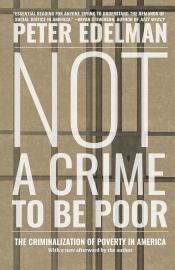
Not a Crime to Be Poor: The Criminalization of Poverty in America by Peter Edelman
A nationally known expert on poverty shows how not having money has been criminalized and shines a light on lawyers, activists, and policy makers working for a more humane approach.
Through money bail systems, fees and fines, strictly enforced laws and regulations against behavior including trespassing and public urination that largely affect the homeless, and the substitution of prisons and jails for the mental hospitals that have traditionally served the impoverished, in one of the richest countries on Earth we have effectively made it a crime to be poor.
Edelman, who famously resigned from the administration of Bill Clinton over welfare "reform," connects the dots between these policies and others including school discipline in poor communities, child support policies affecting the poor, public housing ordinances, addiction treatment, and the specter of public benefits fraud to paint a picture of a mean-spirited, retributive system that seals whole communities into inescapable cycles of poverty.Image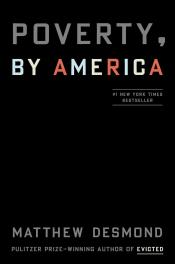 Image
Image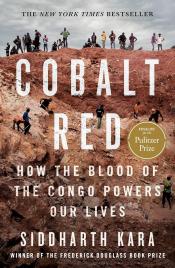
Poverty, by America by Matthew Desmond
In this landmark book, acclaimed sociologist Matthew Desmond draws on history, research, and original reporting to show how affluent Americans knowingly and unknowingly keep poor people poor. Those of us who are financially secure exploit the poor, driving down their wages while forcing them to overpay for housing and access to cash and credit. We prioritize the subsidization of our wealth over the alleviation of poverty, designing a welfare state that gives the most to those who need the least. And we stockpile opportunity in exclusive communities, creating zones of concentrated riches alongside those of concentrated despair. Some lives are made small so that others may grow.
Cobalt Red: How the Blood of the Congo Powers Our Lives by Siddharth Kara
Cobalt is an essential component to every lithium-ion rechargeable battery made today, the batteries that power our smartphones, tablets, laptops, and electric vehicles. Roughly 75 percent of the world’s supply of cobalt is mined in the Congo, often by peasants and children in sub-human conditions. Billions of people in the world cannot conduct their daily lives without participating in a human rights and environmental catastrophe in the Congo. In this stark and crucial book, Kara argues that we must all care about what is happening in the Congo―because we are all implicated.
Theme: Family
Image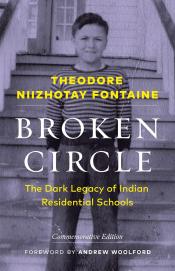
Broken Circle: The Dark Legacy of Indian Residential Schools by Theodore Niizhotay Fontaine
Broken The Dark Legacy of Indian Residential Schools chronicles the impact of Theodore Fontaine’s harrowing experiences at Fort Alexander and Assiniboia Indian Residential Schools, including psychological, emotional, and sexual abuse; disconnection from his language and culture; and the loss of his family and community. Told as remembrances infused with insights gained through his long healing process, Fontaine goes beyond the details of the abuse that he suffered to relate a unique understanding of why most residential school survivors have post-traumatic stress disorders and why succeeding generations of Indigenous children suffer from this dark chapter in history. With a new foreword by Andrew Woolford, professor of sociology and criminology at the University of Manitoba, this commemorative edition will continue to serve as a powerful testament to survival, self-discovery, and healing.
Image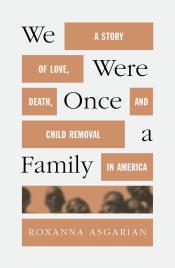
We Were Once a Family: A Story of Love, Death, and Child Removal in America by Roxanna Asgarian
The shocking, deeply reported story of a murder-suicide that claimed the lives of six children—and a searing indictment of the American foster care system.
On March 26, 2018, rescue workers discovered a crumpled SUV and the bodies of two women and several children at the bottom of a cliff beside the Pacific Coast Highway. As a journalist in Houston, Asgarian became the first reporter to put the children’s birth families at the center of the story. We follow the author as she runs up against the intransigence of a state agency that removes tens of thousands of kids from homes each year in the name of child welfare, while often failing to consider alternatives. Her reporting uncovers persistent racial biases and corruption as children of color are separated from birth parents without proper cause. The result is a riveting narrative and a deeply reported indictment of a system that continues to fail America’s most vulnerable children while upending the lives of their families.
Image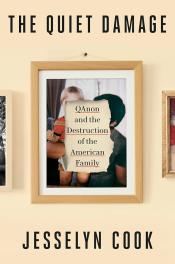
The Quiet Damage: QAnon and the Destruction of the American Family by Jesselyn Cook
The riveting story of five families shattered by pernicious, pervasive conspiracy theories, and how we might set ourselves free from a crisis that could haunt American life for generations.
In The Quiet Damage, celebrated reporter Jesselyn Cook paints a harrowing portrait of the vulnerabilities that have left so many of us susceptible to outrageous falsehoods promising order, purpose, and control. Charting the arc of each believer’s path from their first intersection with conspiracy theories to the depths of their cultish conviction, to—in some cases—their rejection of disinformation and the mending of fractured relationships, Cook offers a rare, intimate look into the psychology of how and why ordinary people come to believe the unbelievable.
Theme: Religion
Image Image
Image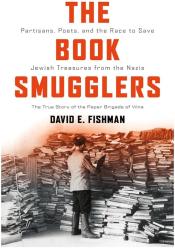
Neighbors: The Destruction of the Jewish Community in Jedwabne, Poland by Jan Tomasz Gross
On a summer day in 1941 in Nazi-occupied Poland, half of the town of Jedwabne brutally murdered the other half: 1,600 men, women, and children-all but seven of the town's Jews. In this shocking and compelling study, historian Jan Gross pieces together eyewitness accounts as well as physical evidence into a comprehensive reconstruction of the horrific July day remembered well by locals but hidden to history. Revealing wider truths about Jewish-Polish relations, the Holocaust, and human responses to occupation and totalitarianism, Gross's investigation sheds light on how Jedwabne's Jews came to be murdered-not by faceless Nazis, but by people who knew them well.
The Book Smugglers is the nearly unbelievable story of ghetto residents who rescued thousands of rare books and manuscripts―first from the Nazis and then from the Soviets―by hiding them on their bodies, burying them in bunkers, and smuggling them across borders. It is a tale of heroism and resistance, of friendship and romance, and of unwavering devotion―including the readiness to risk one’s life―to literature and art. And it is entirely true.
Image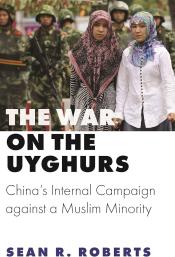
The War on Uyghurs: China’s Internal Campaign against a Muslim Minority by Sean R. Roberts
How China is using the US-led war on terror to erase the cultural identity of its Muslim minority in the Xinjiang region.
Of the eleven million Uyghurs living in China today, more than one million are now being held in so-called reeducation camps, victims of what has become the largest program of mass detention and surveillance in the world. Roberts describes how the Chinese government successfully implicated the Uyghurs in the global terror war—despite a complete lack of evidence—and branded them as a dangerous terrorist threat with links to al-Qaeda. He argues that the reframing of Uyghur domestic dissent as international terrorism provided justification and inspiration for a systematic campaign to erase Uyghur identity, and that a nominal Uyghur militant threat only emerged after more than a decade of Chinese suppression in the name of counterterrorism—which has served to justify further state repression.
A gripping and moving account of the humanitarian catastrophe that China does not want you to know about, The War on the Uyghurs draws on Roberts's own in-depth interviews with the Uyghurs, enabling their voices to be heard.
Image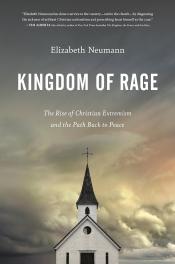
Kingdom of Rage: The Rise of Christian Extremism and the Path Back to Peace by Elizabeth Neumann
How did a Church that purports to follow the teachings of Jesus - the Prince of Peace - become a breeding ground for violent extremism? When Elizabeth Neumann began her anti-terrorism career as part of President George W. Bush’s Homeland Security Counsel in the wake of the September 11 attacks, she expected to spend her life protecting her country from the threat of global terrorism.
But as her career evolved, she began to perceive that the greatest threat to American security came not from religious fundamentalists in Afghanistan or Iraq but from white nationalists and radicalized religious fundamentalists within the very institution that was closest to her heart – the American evangelical church. And she began to sound the alarm, raising her concerns to anyone in government who would listen, including testifying before Congress in February of 2020. At that time, Neumann warned that anti-Semitic and white supremacist terrorism was a transnational threat that was building to the doorstep of another major attack. Shortly after her testimony, she resigned from her role as Department of Homeland Security Assistant Secretary for Counterterrorism and Threat Prevention in protest of what she believed was then-President Trump’s failure of leadership and his stoking of the hatred, anger, and division from which she had dedicated her life to protecting her country. Her worst fears came true when she witnessed the attack on the capital on January 6, 2021.Image
Star-Spangled Jesus: Leaving Christian Nationalism and Finding a True Faith by April Ajoy
A hilarious and eye-opening account of leaving Christian Nationalism behind to follow Jesus better.
Ajoy, TikTok influencer and co-host of the Evangelicalish podcast, shares funny stories from her time deep within Christian nationalism, exploring how aspects of evangelical culture such as purity pledges, product boycotts, Satanic panic, and end-times theology have all been exploited to advance the Christian Nationalist narrative. She also illuminates the ways nationalist thinking has infiltrated our churches and political arenas, shaping not only modern evangelical culture but also American public policy and international relations. Part memoir, part guidebook, part call to action, Star-Spangled Jesus explores how the fight to make America a “Christian nation” has damaged us all and shows how one woman left Christian Nationalism and why America should too.
Theme: Identity and Violence
Image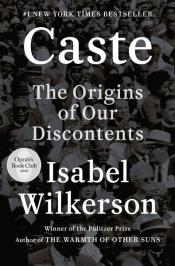 Image
Image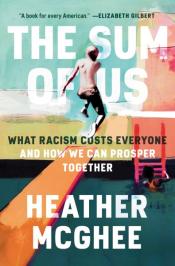
Caste: The Origins of Our Discontents by Isabel Wilkerson
In this brilliant book, Isabel Wilkerson gives us a masterful portrait of an unseen phenomenon in America as she explores, through an immersive, deeply researched narrative and stories about real people, how America today and throughout its history has been shaped by a hidden caste system, a rigid hierarchy of human rankings.
The Sum of Us: What Racism Costs Everyone and How We Can Prosper Together by Heather McGhee
McGhee marshals economic and sociological research to paint a story of racism's costs, but at the heart of the book are the humble stories of people yearning to be part of a better America, including white supremacy's collateral victims: white people themselves. With startling empathy, this heartfelt message from a Black woman to a multiracial America leaves us with a new vision for a future in which we finally realize that life can be more than a zero-sum game.
Image Image
Image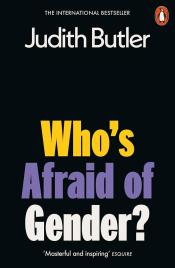
How to Survive a Plague: The Inside Story of How Citizens and Science Tamed AIDS by David France
A riveting, powerful telling of the story of the grassroots movement of activists, many of them in a life-or-death struggle, who seized upon scientific research to help develop the drugs that turned HIV from a mostly fatal infection to a manageable disease. Ignored by public officials, religious leaders, and the nation at large, and confronted with shame and hatred, this small group of men and women chose to fight for their right to live by educating themselves and demanding to become full partners in the race for effective treatments. Around the globe, 16 million people are alive today thanks to their efforts.
Who's Afraid of Gender? by Judith Butler
The aim of Who’s Afraid of Gender? is not to offer a new theory of gender but to examine how “gender” has become a phantasm for emerging authoritarian regimes, fascist formations, and transexclusionary feminists. In their vital, courageous new book, Butler illuminates the concrete ways that this phantasm of “gender” collects and displaces anxieties and fears of destruction. Operating in tandem with deceptive accounts of “critical race theory” and xenophobic panics about migration, the anti-gender movement demonizes struggles for equality, fuels aggressive nationalism, and leaves millions of people vulnerable to subjugation.
Image
The first comprehensive undercover look at the terrorist movement no one is talking about.
Men Who Hate Women examines the rise of secretive extremist communities who despise women and traces the roots of misogyny across a complex spider web of groups. It includes eye-opening interviews with former members of these communities, the academics studying this movement, and the men fighting back.Women's rights activist Laura Bates wrote this book as someone who has been the target of many hate-fueled misogynistic attacks online. At first, the vitriol seemed to be the work of a small handful of individual men... but over time, the volume and consistency of the attacks hinted at something bigger and more ominous. As Bates went undercover into the corners of the internet, she found an unseen, organized movement of thousands of anonymous men wishing violence (and worse) upon women.
Image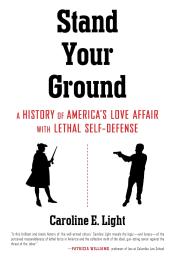 Image
Image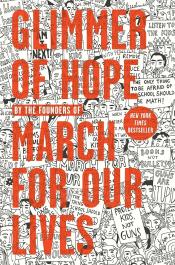
Stand Your Ground: A History of America's Love Affair with Lethal Self-Defense by Caroline E. Light
Stand Your Ground explores the development of the American right to self-defense, and reveals how the duty to retreat from threat was transformed into a selective right to kill. In her rigorous genealogy, Light traces white America s attachment to racialized, lethal self-defense, from the original castle laws to the radicalization of the NRA. A convincing treatise on the United States deadly ascension as the world s first Stand Your Ground nation, Light shows how violent self-defense has been legalized for the most privileged and made the most marginalized more vulnerable.
Glimmer of Hope: How Tragedy Sparked a Movement by The March for Our Lives Founders
On February 14th, 2018, Marjory Stoneman Douglas High School in Parkland, Florida was the site of one of the worst mass shootings in American history, in which 17 students and teachers were killed and 17 more were injured. Instead of dwelling on the pain and tragedy of that fateful day, a group of inspiring students from MSD channeled their feelings of hurt, rage, and sorrow into action, and went on to create one of the largest youth-led movements in global history.
Theme: Nature
Image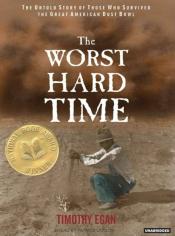 Image
Image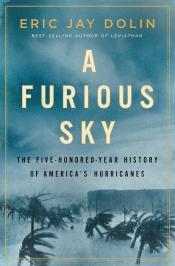
The dust storms that terrorized the High Plains in the darkest years of the Depression were like nothing ever seen before or since. Following a dozen families and their communities through the rise and fall of the region, Timothy Egan tells of their desperate attempts to carry on through blinding black dust blizzards, crop failure, and the death of loved ones.
A Furious Sky: The Five-Hundred-Year History of America's Hurricanes by Eric Jay Dolin
Hurricanes menace North America from June through November every year, each as powerful as 10,000 nuclear bombs. These megastorms will likely become more intense as the planet continues to warm, yet we too often treat them as local disasters and TV spectacles, unaware of how far-ranging their impact can be. As best-selling historian Eric Jay Dolin contends, we must look to our nation’s past if we hope to comprehend the consequences of the hurricanes of the future.
Image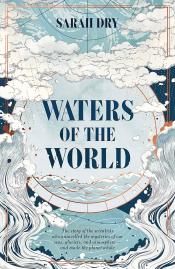
How is the climate where you are? And how did it get that way? How does the great complex global interaction of ice, ocean, and atmosphere combine to generate the rain that sustains us? And who figured all its secret processes out?
From the glaciers of the Alps to the towering cumulonimbus clouds of the Caribbean and the unexpectedly chaotic flows of the North Atlantic, Waters of the World is a tour through 150 years of the history of a significant but underappreciated idea: that the Earth has a global climate system made up of interconnected parts, constantly changing on all scales of both time and space. A prerequisite for the discovery of global warming and climate change, this idea was forged by scientists studying water in its myriad forms. This is their story.Linking the history of the planet with the lives of those who studied it, Sarah Dry follows the remarkable scientists who ascended volcanic peaks to peer through an atmosphere’s worth of water vapour, cored mile-thick ice sheets to uncover the Earth’s ancient climate history, and flew inside storm clouds to understand how small changes in energy can produce both massive storms and the general circulation of the Earth’s atmosphere. Each toiled on his or her own corner of the planetary puzzle. Gradually, their cumulative discoveries coalesced into a unified working theory of our planet’s climate.
We now call this field climate science, and in recent years it has provoked great passions, anxieties, and warnings. But no less than the object of its study, the science of water and climate is — and always has been — evolving. By revealing the complexity of this history, Waters of the World delivers a better understanding of our planet’s climate at a time when we need it the most.Image
The Heat Will Kill You First: Life and Death on a Scorched Planet by Jeff Goodell
The world is waking up to a new wildfires are now seasonal in California, the Northeast is getting less and less snow each winter, and the ice sheets in the Arctic and Antarctica are melting fast. Heat is the first order threat that drives all other impacts of the climate crisis. And as the temperature rises, it is revealing fault lines in our governments, our politics, our economy, and our values. The basic science is not Stop burning fossil fuels tomorrow, and the global temperature will stop rising tomorrow. Stop burning fossil fuels in 50 years, and the temperature will keep rising for 50 years, making parts of our planet virtually uninhabitable. It’s up to us. The hotter it gets, the deeper and wider our fault lines will open.
The Heat Will Kill You First is about the extreme ways in which our planet is already changing. It is about why spring is coming a few weeks earlier and fall is coming a few weeks later and the impact that will have on everything from our food supply to disease outbreaks. It is about what will happen to our lives and our communities when typical summer days in Chicago or Boston go from 90° F to 110°F. A heatwave, Goodell explains, is a predatory event— one that culls out the most vulnerable people. But that is changing. As heatwaves become more intense and more common, they will become more democratic.
Image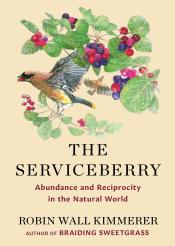
The Serviceberry: Abundance and Reciprocity in the Natural World by Robin Wall Kimmerer
As indigenous scientist and author of Braiding Sweetgrass Robin Wall Kimmerer harvests serviceberries alongside the birds, she considers the ethic of reciprocity that lies at the heart of the gift economy. How, she asks, can we learn from indigenous wisdom and the plant world to reimagine what we value most? Our economy is rooted in scarcity, competition, and the hoarding of resources, and we have surrendered our values to a system that actively harms what we love.
Meanwhile, the serviceberry’s relationship with the natural world is an embodiment of reciprocity, interconnectedness, and gratitude. The tree distributes its wealth—its abundance of sweet, juicy berries—to meet the needs of its natural community. And this distribution insures its own survival. As Kimmerer explains, “Serviceberries show us another model, one based upon reciprocity, where wealth comes from the quality of your relationships, not from the illusion of self-sufficiency.”Image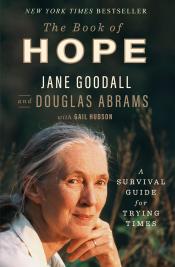
The Book of Hope: A Survival Guide for Trying Times by Jane Goodall, Douglas Abrams, and Gail Hudson
In a world that seems so troubled, how do we hold on to hope?
Looking at the headlines—a global pandemic, the worsening climate crisis, political upheaval—it can be hard to feel optimistic. And yet hope has never been more desperately needed.
In this urgent book, Jane Goodall, the world's most famous living naturalist and Doug Abrams, internationally-bestselling author, explore—through intimate and thought-provoking dialogue—one of the most sought after and least understood elements of human nature: hope. In The Book of Hope, Jane focuses on her “Four Reasons for Hope”: The Amazing Human Intellect, The Resilience of Nature, The Power of Young People, and The Indomitable Human Spirit.
Told through stories from a remarkable career and fascinating research, The Book of Hope touches on vital questions including: How do we stay hopeful when everything seems hopeless? How do we cultivate hope in our children? Filled with engaging dialogue and pictures from Jane’s storied career, The Book of Hope is a deeply personal conversation with one of the most beloved figures in today’s world.
And for the first time, Jane tells the story of how she became a messenger of hope: from living through World War II, to her years in Gombe, to realizing she had to leave the forest to travel the world in her role as an advocate for environmental justice. She details the forces that shaped her hopeful worldview, her thoughts on her past, and her revelations about her next—and perhaps final—adventure.
There is still hope, and this book will help guide us to it.
Theme: Technology
Image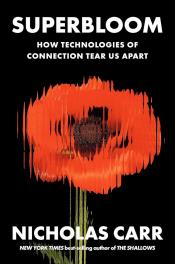
Superbloom: How Technologies of Connection Tear Us Apart by Nicholas Carr
From the author of The Shallows, a bracing exploration of how social media has warped our sense of self and society.
From the telegraph and telephone in the 1800s to the internet and social media in our own day, the public has welcomed new communication systems. Whenever people gain more power to share information, the assumption goes, society prospers. Superbloom tells a startlingly different story. As communication becomes more mechanized and efficient, it breeds confusion more than understanding, strife more than harmony. Media technologies all too often bring out the worst in us.
A celebrated interpreter of technology’s impacts on human life, Nicholas Carr guides the reader through the dark trends that have always shadowed how telegrams disrupted diplomacy, how radio aided autocrats, how the Facebook feed sowed division, how AI now blurs reality and fantasy. With vivid examples from history, science, and politics, Superbloom unmasks a fundamental flaw in our perception of, and revolutionizes our understanding of, how media shapes society. It may be too late to curb the “superbloom” of information—but it’s not too late to change ourselves.
Image
Careless People: A Cautionary Tale of Power, Greed, and Lost Idealism by Sarah Wynn-Williams
An explosive memoir charting one woman’s career at the heart of one of the most influential companies on the planet, Careless People gives you a front-row seat to Facebook, the decisions that have shaped world events in recent decades, and the people who made them.
From trips on private jets and encounters with world leaders to shocking accounts of misogyny and double standards behind the scenes, this searing memoir exposes both the personal and the political fallout when unfettered power and a rotten company culture take hold. In a gripping and often absurd narrative where a few people carelessly hold the world in their hands, this eye-opening memoir reveals what really goes on among the global elite.
Sarah Wynn-Williams tells the wrenching but fun story of Facebook, mapping its rise from stumbling encounters with juntas to Mark Zuckerberg’s reaction when he learned of Facebook’s role in Trump’s election. She experiences the challenges and humiliations of working motherhood within a pressure cooker of a workplace, all while Sheryl Sandberg urges her and others to “lean in.”
Careless People is a deeply personal account of why and how things have gone so horribly wrong in the past decade—told in a sharp, candid, and utterly disarming voice. A deep, unflinching look at the role that social media has assumed in our lives, Careless People reveals the truth about the leaders of Facebook: how the more power they grasp, the less responsible they become and the consequences this has for all of us.
Image
Unmasking AI: My Mission to Protect What is Human in a World of Machines by Joy Buolamwini
To most of us, it seems like recent developments in artificial intelligence emerged out of nowhere to pose unprecedented threats to humankind. But to Dr. Joy Buolamwini, who has been at the forefront of AI research, this moment has been a long time in the making.
After tinkering with robotics as a high school student in Memphis and then developing mobile apps in Zambia as a Fulbright fellow, Buolamwini followed her lifelong passion for computer science, engineering, and art to MIT in 2015. As a graduate student at the “Future Factory,” she did groundbreaking research that exposed widespread racial and gender bias in AI services from tech giants across the world.
Unmasking AI goes beyond the headlines about existential risks produced by Big Tech. It is the remarkable story of how Buolamwini uncovered what she calls “the coded gaze”—the evidence of encoded discrimination and exclusion in tech products—and how she galvanized the movement to prevent AI harms by founding the Algorithmic Justice League. Applying an intersectional lens to both the tech industry and the research sector, she shows how racism, sexism, colorism, and ableism can overlap and render broad swaths of humanity “excoded” and therefore vulnerable in a world rapidly adopting AI tools. Computers, she reminds us, are reflections of both the aspirations and the limitations of the people who create them.
Encouraging experts and non-experts alike to join this fight, Buolamwini writes, “The rising frontier for civil rights will require algorithmic justice. AI should be for the people and by the people, not just the privileged few.”Image
In The Anxious Generation, social psychologist Jonathan Haidt lays out the facts about the epidemic of teen mental illness that hit many countries at the same time. He then investigates the nature of childhood, including why children need play and independent exploration to mature into competent, thriving adults. Haidt shows how the “play-based childhood” began to decline in the 1980s, and how it was finally wiped out by the arrival of the “phone-based childhood” in the early 2010s. He presents more than a dozen mechanisms by which this “great rewiring of childhood” has interfered with children’s social and neurological development, covering everything from sleep deprivation to attention fragmentation, addiction, loneliness, social contagion, social comparison, and perfectionism. He explains why social media damages girls more than boys and why boys have been withdrawing from the real world into the virtual world, with disastrous consequences for themselves, their families, and their societies.
Most important, Haidt issues a clear call to action. He diagnoses the “collective action problems” that trap us, and then proposes four simple rules that might set us free. He describes steps that parents, teachers, schools, tech companies, and governments can take to end the epidemic of mental illness and restore a more humane childhood.
Haidt has spent his career speaking truth backed by data in the most difficult landscapes—communities polarized by politics and religion, campuses battling culture wars, and now the public health emergency faced by Gen Z. We cannot afford to ignore his findings about protecting our children—and ourselves—from the psychological damage of a phone-based life.